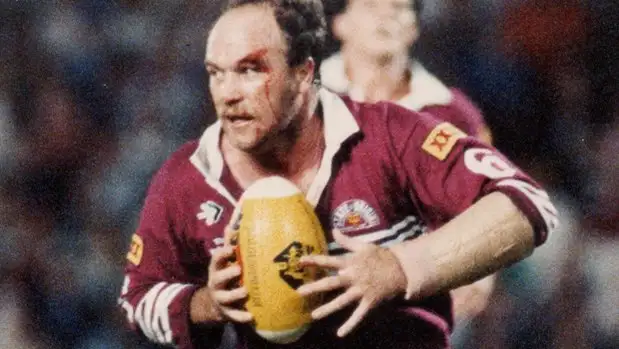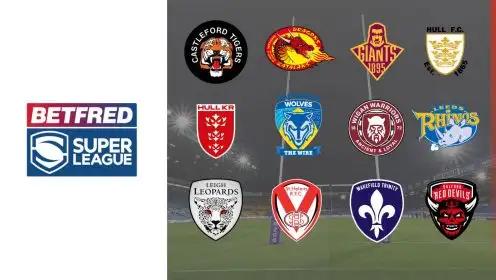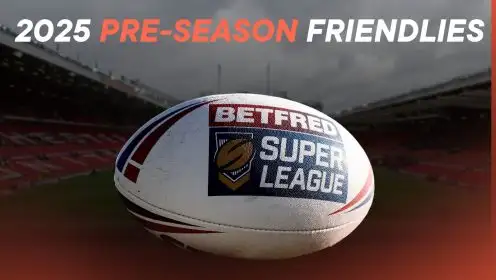In depth: Wally ‘The King’ Lewis

Just like in many sports every now and again there comes along a player or even players that ultimately redefines the sport and an entire generation of talent. For many, Wally Lewis was exactly that. Now, as the Aussie legend celebrates his 59th birthday we add another one to the in depth series and focus on the career of one of the sports’ greatest ever…..
When we think of rugby league and the specific traits of player, we generally think of size, power and huge motor among other things. However, what should never be dismissed is the creativity and flair that is largely involved in the beautiful game. The kind of characteristics that gets people on the edge of their seats in awe of what they are seeing and what the player is about to do next. Lewis was just that type of player. As controversial as he was spectacularly gifted, the rugby league world may be divided over him but there was no arguing his true genius as a halfback. The kick of the boot, the exquisite pass of the ball and his brave but passionate demeanour were there to see throughout a highly decorated career.
Born in Hawthorne, Queensland, Lewis grew up in a suburbia area of Brisbane called Cannon Hill and whilst attending Brisbane State High School he earned his first taste of competitive rugby. It was here that we saw Lewis selected for the Australian Schoolboys rugby union tour of Great Britain in 1977, the first of three undefeated tours of Great Britain the King would make representing Australia. However, after facing much pressure from within the Queensland rugby union hierarchy, the then 19-year-old made the turn to professional rugby league in 1978, with Brisbane Valleys where he was able develop his skillset under the tutorship and coaching of his father Jim Lewis.
It was obvious from the beginning of his rugby league journey that Lewis’ skills belonged within the confides of rugby league as by his third season in 1980 he earned a historic selection into Queensland’s inaugural State of Origin squad. The game was the first between the first two states under the new selection rules that took into consideration player birth and a player’s first-grade rugby league match.
At the end tender age of 21 the torch of the Queensland captaincy was passed over from the legend that was Arthur Beetson to a young and consistently progressing Lewis in time for the 1981 series. The series would see the youngster move from the lock position to halfback, showcasing his versatility and adaptability as his star looked to be continuously on the rise. The following year saw the start of his Kangaroos journey, earning a call up to what would eventually be considered one of the finest Australian teams to make its way over to Britain. Despite appearing off the bench in most instances, the young starlet became part of a now famous tour saw Australia win every single tour match against that of Great Britain, France, Wales and plenty of domestic clubs. The Kangaroos looking so dominant that they were dubbed the Immortals.
As his spell at Brisbane/Fortitude Valley came to an end in 1982 he had already developed an ability as a prolific try scorer, notching just over 70 tries in over 100 appearances and presenting why he was becoming one of rugby league’s great talents to watch.
Over Australia’s off-season in 1983, Lewis made the long journey over to the heartlands of rugby league after signing for West Yorkshire side Wakefield Trinity. Despite only ten games at Wakefield it was deemed unsuccessful, however for many they became a true testament to his ability as a rugby league player as he left an everlasting impression amongst the team and its support. The 23-year-old brought along his own creative style and organisational prowess that placed him amongst the rugby league elite at the time. Throughout those ten games, Wakefield were able to win five out of the ten games with a monumental win over St. Helens in which Lewis scored a decisive hat-trick. If any other indication was needed as to how much of a hole Lewis made after he played his final match at Belle Vue, the West Yorkshire outfit failed to win another game and in the end were condemned to relegation at seasons end.
The Aussie’s star was one that was only just beginning to rise as he made the move back over to Australia and Wynnum Manly in 1984. The five-eighth’s genius became more undoubtable as Lewis continued to put forth impressive performance after impressive performance. In a four-season spell, Lewis became one of the club’s prime figures as the Seagulls captured two Brisbane Rugby League titles (1984 and 1986) throughout that stint. The 1984 season saw Lewis take over as Australia captain at the age of 25 and go on to lead the Kangaroos in a record 23 consecutive Tests between 1984-89. That season also proved to be the one that catapulted the man himself into the upper tier of the rugby league playing elite as his inspirational performances continued at representative level, claiming two man of the match awards in Queensland’s 2-1 State of Origin win over NSW. Lewis’s accomplishments becoming further recognised as he claimed the first ever Golden Boot award as the best player in rugby league.
As the 1988 season came along, Lewis made a move to the newly minted Brisbane Broncos and was instantly made their inaugural captain. After two seasons, the controversial decision was made to sack Lewis as club captain in replace of former teammate and friend, Gene Miles and as his relationship with the Broncos continued to sour it still did nothing to stop him from continually making his mark on the State of Origin. The King’s inspiring displays becoming more of a freakish formality as Queensland went onto win both the 1988 and 1989 series 3-0. The latter of which saw Lewis produce one of his finest moments in a Marrons shirt as he scored one of the series most famous tries, running 40 metres cross field to score a try in the corner after outpacing a younger Laurie Daley and holding off a tackle by Garry Jack.
After losing the Australian captaincy through injury and his relationship with the Broncos at a low, Lewis made the jump over to the Gold Coast Seagulls in 1991 where he would see out his legendary career and retiring form the game in 1992. Although he never reached the heights of his ability at the Broncos and Gold Coast as he did at Brisbane Valley and Wynnum-Manly, his legacy amongst the game was already set. An illustrious career ended with 136 tries in 286 appearances along with a plethora of trophies that included three Premiership titles, a Golden Boot, a Dally M medal for the best five-eighth, all to name but a few.
The whole concept of State of Origin became an aspect embroiled in this man’s game, captaining the Maroons on 22 consecutive occasions and in most cases was able to motivate and put the entire state behind him, creating some of the series most memorable moments. The unquestionable desire, ability make the right decision and passion knew no bounds as he grew up on a hunger for the game. Whether it be a miraculous try or a brave fightback there was always a moment to saviour in this man’s career at all levels. There were of course a few knocks now and again, but he will always be seen as the ‘Emperor of Lang Park’, an Immortal and forever the one and only King.
Milestones and achievements
PREMIERSHIPS: 1979, 1984, 1986
KANGAROO TOURS: 1982, 1986
AUSTRALIAN CAPTAIN: 24 Tests
KANGAROO TOUR CAPTAIN :1986
GOLDEN BOOT AWARD: 1984
DALLY M FIVE-EIGHTH OF THE YEAR: 1988
HARRY SUNDERLAND MEDAL: 1988
AUSTRALIAN RUGBY LEAGUE TEAM OF THE CENTURY: 2008
QUEENSLAND TEAM OF THE CENTURY: 2008
IMMORTAL: 1999
RATED NO. 7 IN RUGBY LEAGUE WEEK’S TOP 100 PLAYERS: 1992
NAMED IN NRL TEAM OF THE 1980S: 2004
Happy Birthday to the King!



